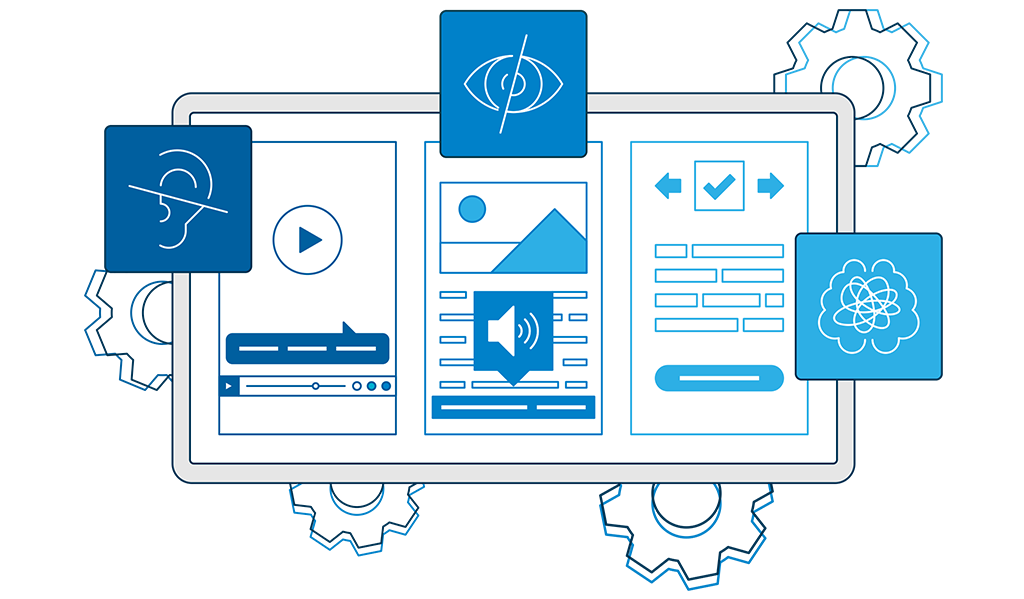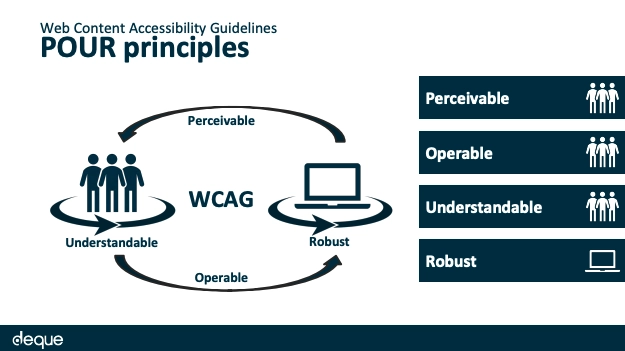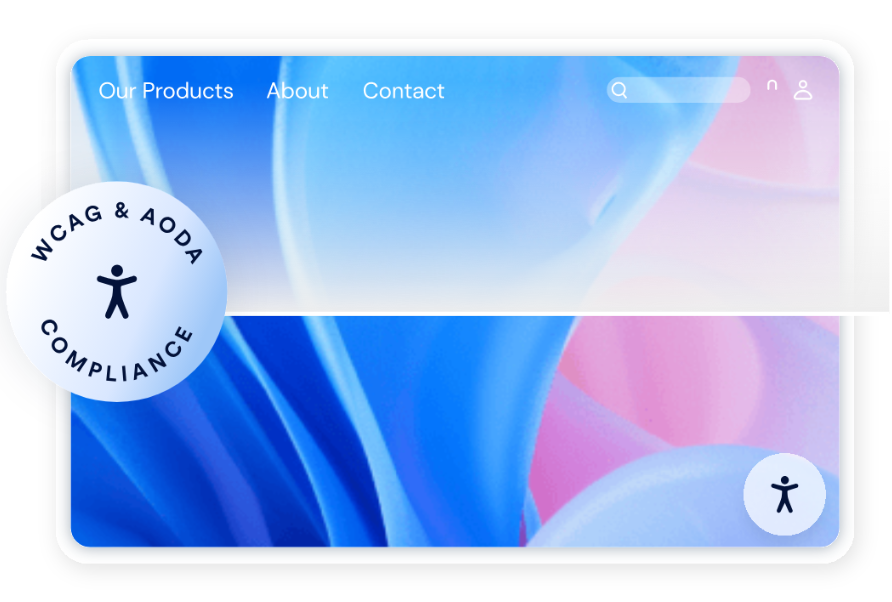Digital accessibility is the practice of making digital content and services accessible to everyone, including people with disabilities. This includes websites, apps, electronic documents, and other digital tools.

Why is digital accessibility important?
- It promotes inclusivity
- It helps businesses reach a larger customer base
- It ensures that people with disabilities have equal access to information and services
How is digital accessibility achieved?
- By designing content in a way that is perceivable, operable, understandable, and robust
- By providing alternative text for images, captions for videos, and clear headings for navigation
- By making sure that users can interact with digital interfaces effectively
- By making sure that digital solutions are compatible with different devices, browsers, and assistive technologies
Examples of digital accessibility features:
- Text transcripts synchronized with audio tracks
- Keyboard navigation
- Intuitive controls
- Skip-to-content links
- Alternative text for images
- Captions for videos
- Clear headings for navigation.
What is WCAG
The Web Content Accessibility Guidelines (WCAG) are developed through the W3C process in cooperation with individuals and organisations around the world, with a goal of providing a single shared standard for web content accessibility that meets the needs of individuals, organisations, and governments internationally.
The WCAG documents explain how to make web content more accessible to people with disabilities. Web “content” generally refers to the information in a web page or web application, including:
- natural information such as text, images, and sounds
- code or markup that defines structure, presentation, etc.

What is ADA
The Americans with Disabilities Act (ADA) is a federal law that protects people with disabilities from discrimination. The ADA aims to ensure that people with disabilities have the same rights and opportunities as everyone else.
To meet ADA compliance standards, websites must adhere to the Web Content Accessibility Guidelines (WCAG), which include principles such as being perceivable, operable, understandable, and robust.
How to meet ADA compliance standards?
WCAG 2.2 has been ruled as the standard to comply with by U.S. state and local governments.
The WCAG guidelines have a three-tiered grading system:
- Level A: Your website is only accessible by some users
- Level AA: Your website is accessible by almost all users
- Level AAA: Your website is accessible by all users
To achieve compliance a website or digital service must meet Level AA of the guidelines.
What is EAA
The European Accessibility Act (EAA) mandates that a range of products and services, including many types of online experiences such as e-commerce websites and mobile apps, are accessible to people with disabilities.
All companies operating in the EU and providing digital products or services must comply with the EAA by 28 June 2025.
The EAA covers commonly used hardware and software products, websites, and mobile apps, as well as various services pertaining to industries such as communication, commerce, finance, education, and transportation.
The EAA does not directly address healthcare services unless services offered are the same as any of the previously listed experiences or technologies. In the case of digital leaflets and related services these would fall with category of "digital assets and technologies" and as such compliance is required.
What is the standard for compliance with the European Accessibility Act?
While some EU standards exists ( for example EN 301 549 or EN 301 549 ) these currently include the Web Content Accessibility Guidelines (WCAG) 2.2. Because WCAG is an established framework for assessing digital accessibility in the EU, conforming to these criteria at an “AA” level (which includes A and AA criteria) is the best way for organisations to start ensuring they comply with the EAA.
To comply with the EAA, providers must publish accessibility statements indicating how they meet the Act’s requirements.
Making an eLeaflet accessible
When we look at how to make an eLeaflet accessible we need to consider several factors:
- achieve WCAG conformance as the basis for ADA and EAA compliance
- include WCAG is the GMP validation process
- make sure that eLeaflet content is "usable" on the largest number of devices (even older ones) as inclusivity is not just people with disabilities but also users with access to older technology.

The eLeaflet® and myHealthbox® platforms have been designed to follow WCAG guidelines and support ADA and EAA regulations.
For more information on how to implement digital leaflets or eIFUs according to the WCAG guidelines contact us at sales@myhealthbox.eu